Foreign Fields: traces of war in landscape
Using infrared photography, Jonathan Beamish has uncovered the indelible scars on the landscape of the Western Front
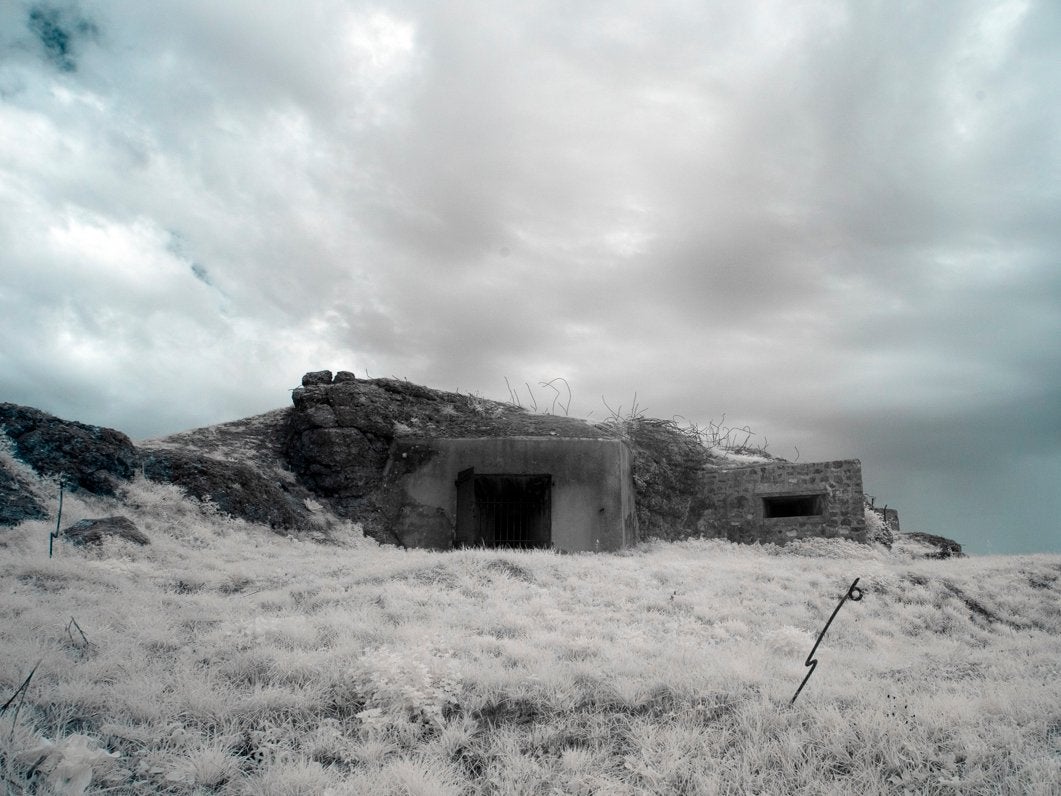
Your support helps us to tell the story
From reproductive rights to climate change to Big Tech, The Independent is on the ground when the story is developing. Whether it's investigating the financials of Elon Musk's pro-Trump PAC or producing our latest documentary, 'The A Word', which shines a light on the American women fighting for reproductive rights, we know how important it is to parse out the facts from the messaging.
At such a critical moment in US history, we need reporters on the ground. Your donation allows us to keep sending journalists to speak to both sides of the story.
The Independent is trusted by Americans across the entire political spectrum. And unlike many other quality news outlets, we choose not to lock Americans out of our reporting and analysis with paywalls. We believe quality journalism should be available to everyone, paid for by those who can afford it.
Your support makes all the difference.Happy are these who lose imagination:
They have enough to carry with ammunition.
Their spirit drags no pack.
Their old wounds, save with cold, can not more ache.
Having seen all things red,
Their eyes are rid
Of the hurt of the colour of blood for ever.
And terror’s first constriction over,
Their hearts remain small-drawn.
Their senses in some scorching cautery of battle
Now long since ironed,
Can laugh among the dying, unconcerned.
Wilfred Owen – “Insensibility”
In the lead up to the centenary of Armistice Day and the end of the First World War, I’ve been working on a photography series about the traces of war at the battle sites.
Though much has grown back in the countryside and farmland of the Western Front, in many places the terrain still shows the unmistakable seams, gouges and fissures of battle.
Using historical records and infrared photographic techniques developed by the military, I’ve been exploring and photographing key battlefield locations in France and Belgium.
I researched First World War history in each place and often found harrowing accounts of courage and sacrifice.
Cover him, cover him son. And with thick-set
Masses of memoried flowers – Hide that red wet
Thing I must somehow forget.
Ivor Gurney – “To his love”
The Somme
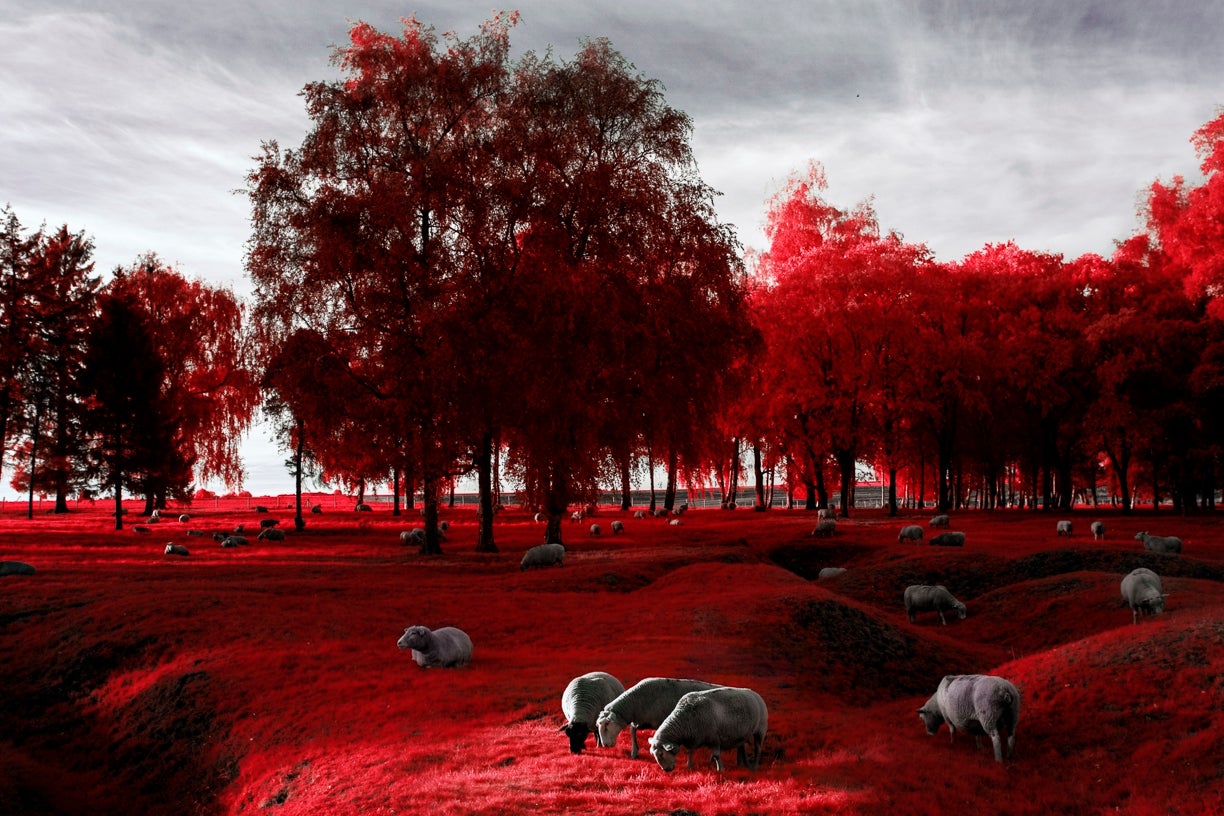
Beaumont-Hamel was close to the front line at the Battle of the Somme, one of the largest allied offensives of the First World War. By 1918, the village had been almost totally destroyed. On 1 July 1916, The Royal Newfoundland Regiment was all but wiped out by German fire as they moved over open ground to make an attack. All told, the British and Commonwealth casualties that day were 57,470 men, with 19,240 killed. It was the worst day for casualties in British military history.
Passchendaele
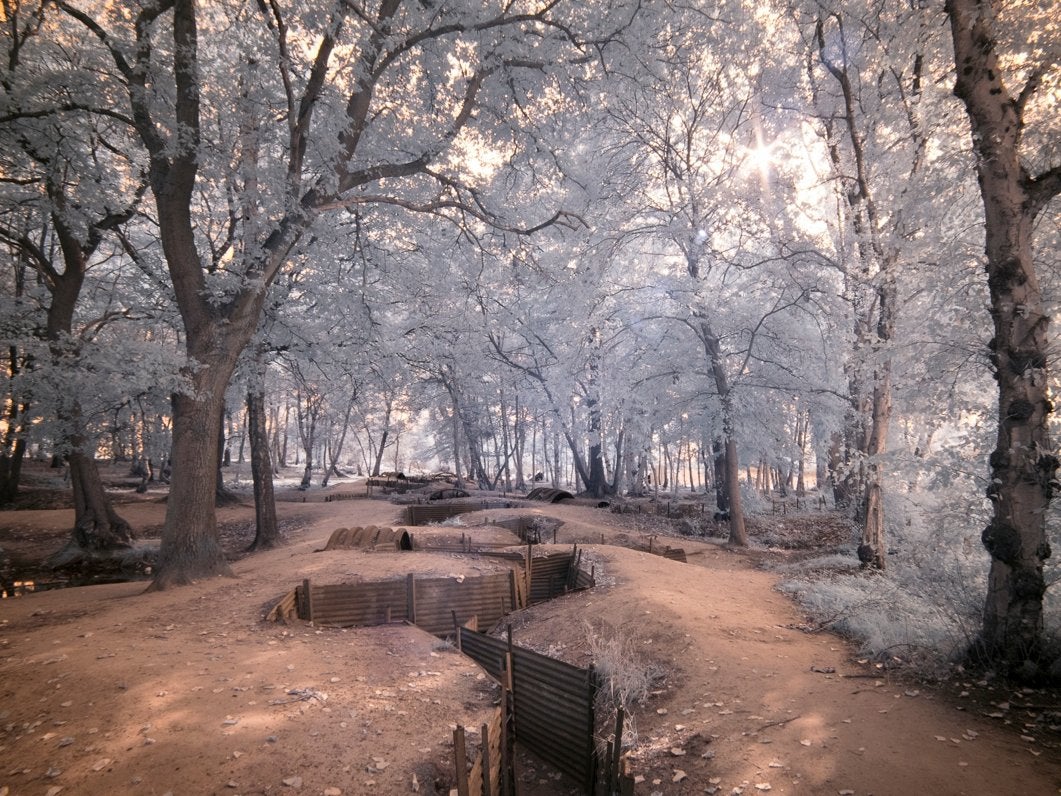
Front line and support trenches for the British and the German Armies remained in and around Sanctuary Wood until 31 July 1917, when the British launched a full scale offensive on German lines, beginning the battle of Passchendaele.
Vimy Ridge
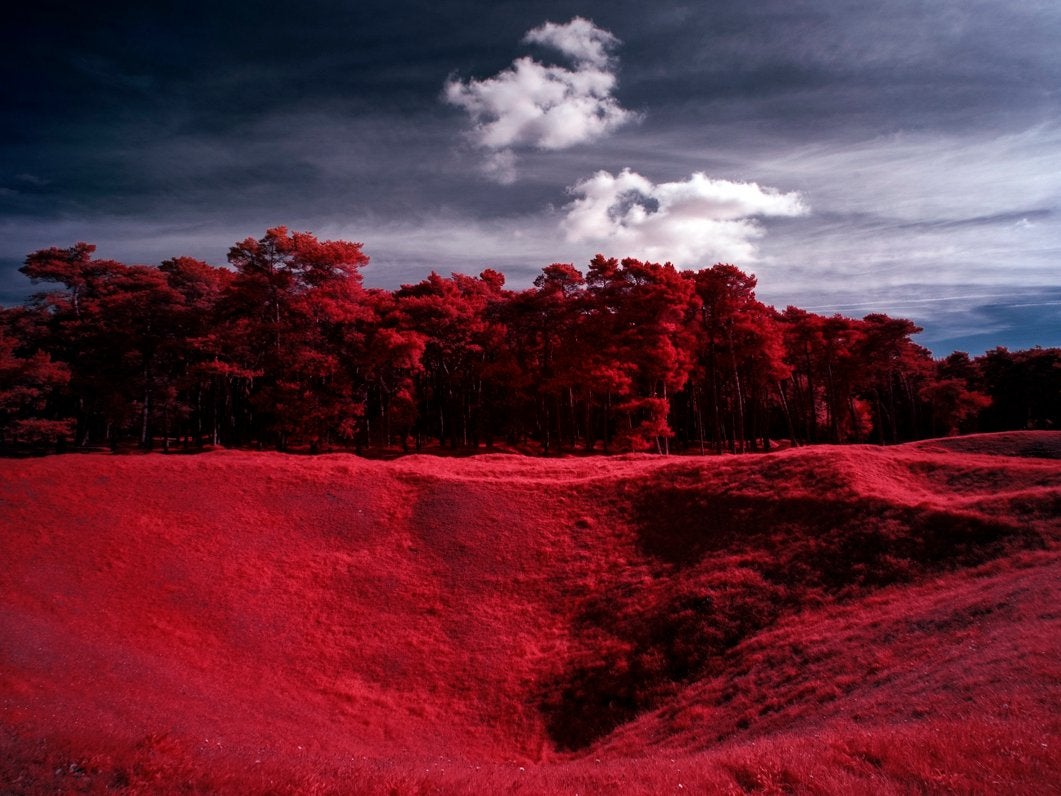
The huge crater at Vimy Ridge was caused by a devastating British mine detonation beneath German bunker positions at 9:50pm on 27 November 1916. The Battle of Arras began on Easter Monday – 9 April 1917 – and saw four divisions of the Canadian Corps fighting side by side for the first time. They scored a huge tactical victory with the capture of Vimy Ridge.
Rossignol
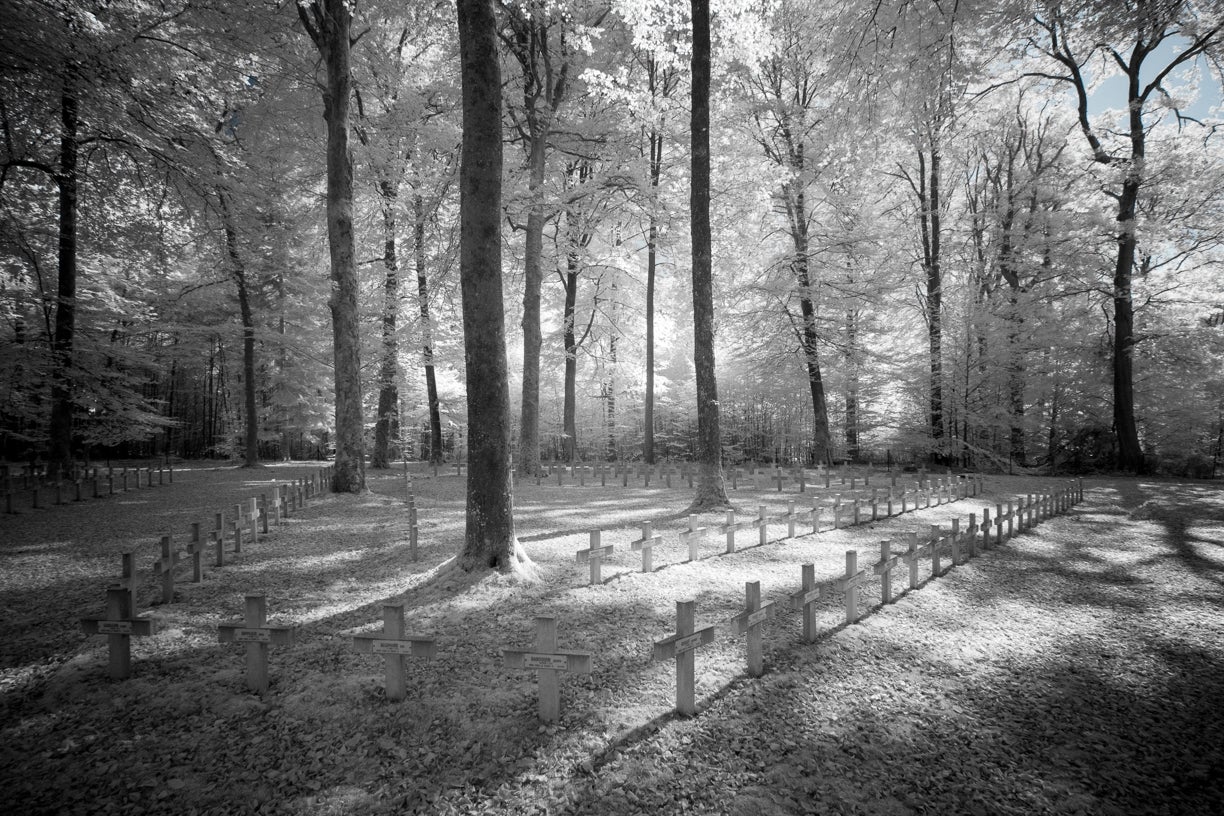
On the 22 August 1914, in this woodland cemetery in Rossignol, hundreds of men were buried where they’d fallen, directly after battle. On this day in the Battle of the Frontiers, French soldiers fought invading German forces on five battlefields. More than 27,000 French soldiers lost their lives, France’s highest single-day death toll.
Verdun

In February 1916, German troops captured forts Douaumont and Vaux, the principal positions guarding the city of Verdun. The forts were not recaptured until 24 October. The battle of Verdun would become the longest and bloodiest conflict of the First World War, resulting in more than 700,000 casualties.
St Mihiel
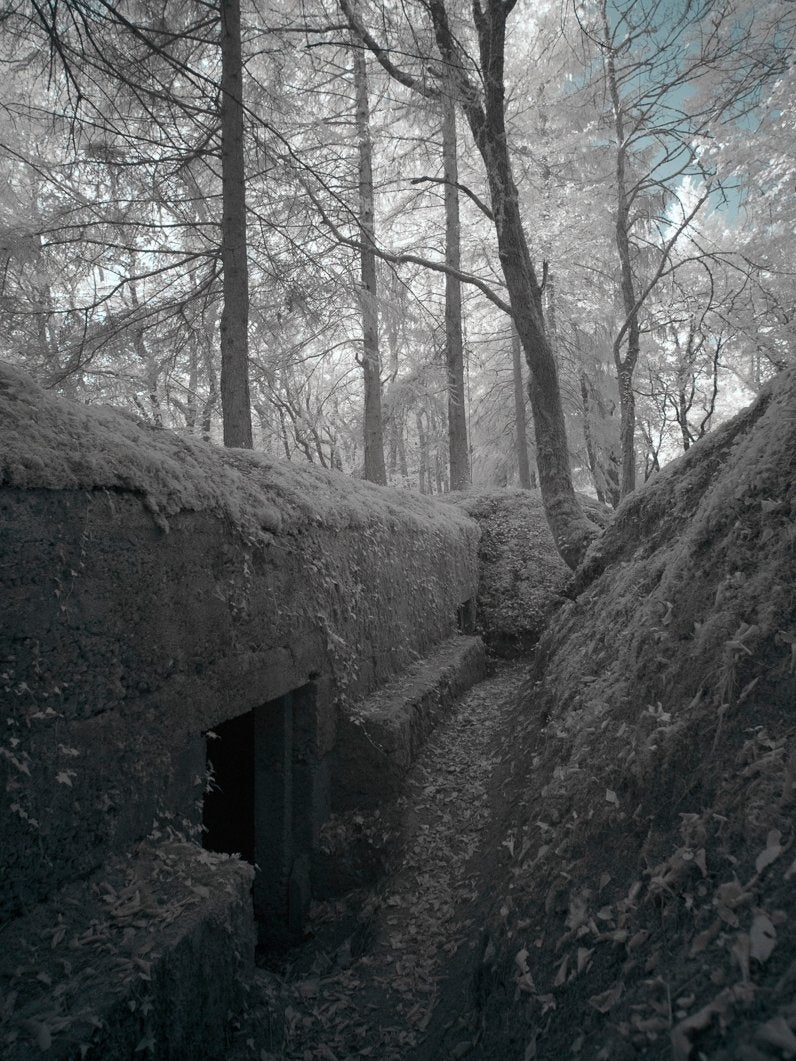
The battlefield at St Mihiel saw sustained fighting and heavy casualties during the First World War, with US and French forces attacking German positions. The German trenches at Bois d’Ailly were captured by the French in May 1915, before being taken back in German counter attacks.
The trench is known as the “Tranchée de la Soif” – the Trench of Thirst – because the French would fight desperately without food or water until the evening of 22 May 1915, when they were reduced to just 63 men.
Belleau Wood
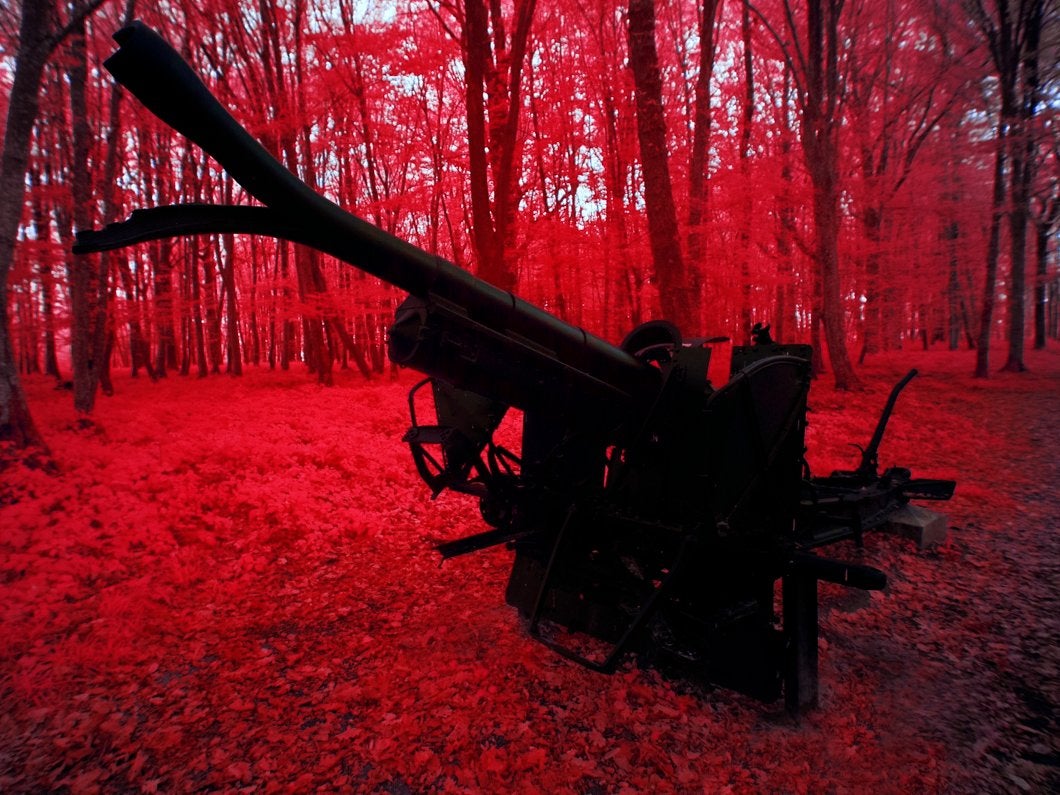
The Battle of Belleau Wood was the first large-scale battle fought by American soldiers in the First World War, during the German spring offensive. On 26 June 1918, the Americans were victorious, but at a cost of nearly 10,000 dead, wounded, or missing in action.
The Sambre
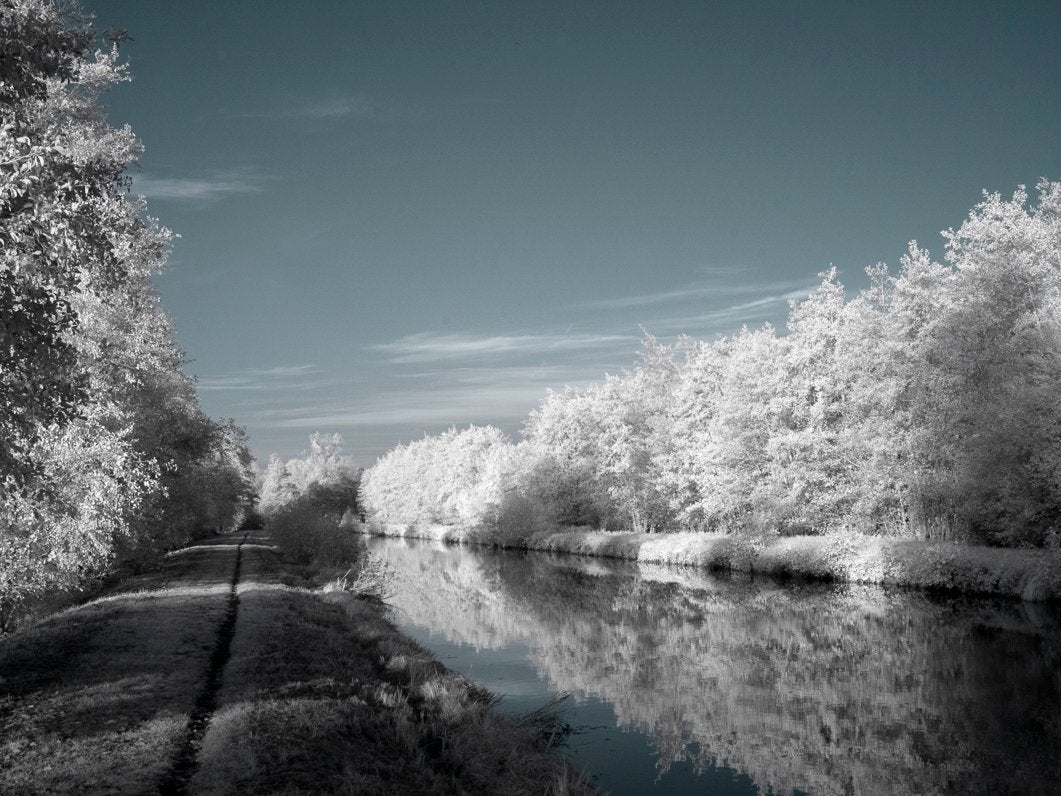
On 31 October 1918, Wilfred Owen wrote one last letter home from the cellar of a forester’s house in Ors, near the Sambre–Oise canal.
‘It is a great life. I am more oblivious than, alas! Yourself, dear Mother, of the ghastly glimmering of the guns outside & the hollow crashing of the shells.’
He was killed, with most of his raiding party, trying to bridge the canal in northern France on 4 November 1918, a week before Armistice Day.
Join our commenting forum
Join thought-provoking conversations, follow other Independent readers and see their replies
Comments